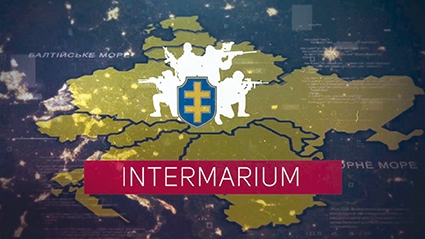
By Emil Avdaliani – Tbilisi
The Intermarium Project refers to a geopolitical concept developed by the 20th century Polish leader Jozef Pilsudski, involving the region from the Baltic to the Black seas. Following the dissolution of the Russian Empire in the wake of World War 1 (1914-1918), Poland, Ukraine, Lithuania and Belarus formed independent, albeit short-lived nation-based states. Pilsudski believed that an alliance of those four states in a federal body could safeguard their respective sovereignties.
In late 1930s, Hungary, Italy, Yugoslavia, and Romania were added to the concept under the initiative of the Polish Minister of Foreign Affairs, Jozef Beck. For both Pilsudski and Beck, the Intermarium Project would essentially involve the lands of the former 16-17 cc. Polish-Lithuanian Commonwealth. Pilsudski was not trying to invade the neighboring states, but he hoped that the space would be under Polish leadership.
The idea of the Intermarium varied depending on the time and place of its formulation, sometimes stretching from the Scandinavian countries up to the Balkans. The concept survived in Polish and Central Eastern European political thinking during communist times, primarily through the work of the elites of eastern European countries and with British and US financial support.
However, discussion of the project was censored in Central and Eastern Europe during the Cold War, with the Soviets very much interested in destroying the concept. After the collapse of the Soviet Union in 1991, the Intermarium Project slowly but steadily reemerged from near oblivion.
In the past decade, a similar project, called the Trimarium (the space between the Black, Baltic and Adriatic seas) emerged in the political thinking of eastern European elites.
The difference is that the Intermarium is a historical project of regional integration, while the Trimarium, or “Three Seas Initiative” is a project of regional cooperation. The geopolitical confusion caused by these two terms is caused by the fact that it is Poland which is expected to raise the banner of small nations against potential geopolitical rivals.
Along with Poland, another important country in the region of the Intermarium is Romania, which has developed close military ties with Poland and other neighboring states. The Baltics are also involved in various initiatives.
Yet, there is also a certain amount of pessimism surrounding the project. Few countries want to reignite the Cold War geopolitical battle over Eastern Europe. Most Europeans, even those in Eastern Europe, believe that it is possible to accommodate Russian interests without creating a new containment strategy. The US, however, is much interested and sponsors the development of this project, though the project actually directly challenges one of Europe’s most defining institutions, NATO. The Intermarium is not formally subject to NATO strategy, but in reality it functions outside it.
The vitality of the Intermarium project also means that Poland and other eastern Europe states will be less willing to live according to the French and German understanding of the European space. Most Intermarium members are outside the Eurozone but constitute the most economically dynamic part of Europe.
A driving motive behind the creation of the Intermarium and its existence nowadays still is the seeming threat emanating from Russia. Events in Ukraine since 2014 have confirmed Polish thinking. Warsaw understands the region from a difference perspective than western Europeans. The nation, traumatized by world wars in the 20th century and constant divisions of its territory by Germans (Prussians) and Russians in the 18th century, sees an opportunity to enhance the region around itself through military and economic means. It can be even argued that by 2019 there are arguably much better chances for the success of the project than ever before.
The most notable reason the Intermarium project was so easily killed off in the 20th century was not so much the creation of a powerful of Soviet state in Russia, but rather by German intentions. The Poles might have resisted and succeeded in taming the Soviet threat if not for the attack from the rear. Interestingly, the 18th century Polish-Lithuania Commonwealth was destroyed in the same fashion by the Germans (with Prussians pressing on Poland from behind). In contrast, when Poland had its rear safe and clear, it was able to stop the Russian threat as it did in 1920.
In that sense, nowadays, we see interesting developments in Europe where Poland does not have to worry about a military threat from the European hinterland and can now concentrate on thwarting Russian geopolitical intentions. Moreover, the US is also interested in supporting the Poles, creating exceptionally good conditions for the success of the Intermarium.
First published in Georgia Today 03/29/2019
